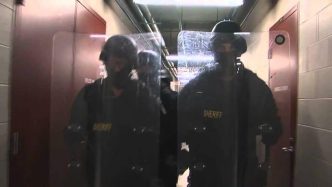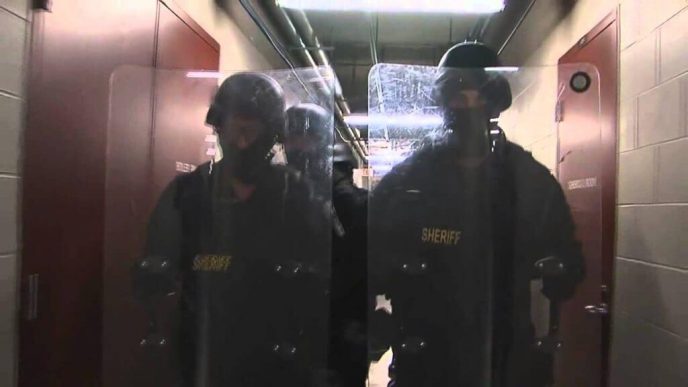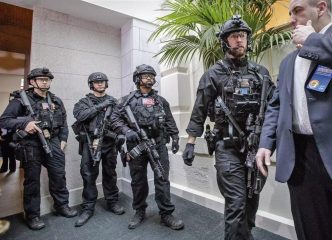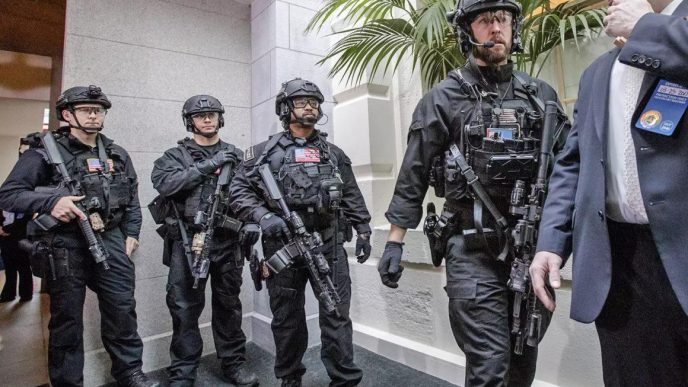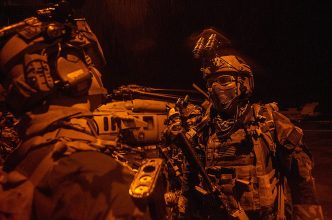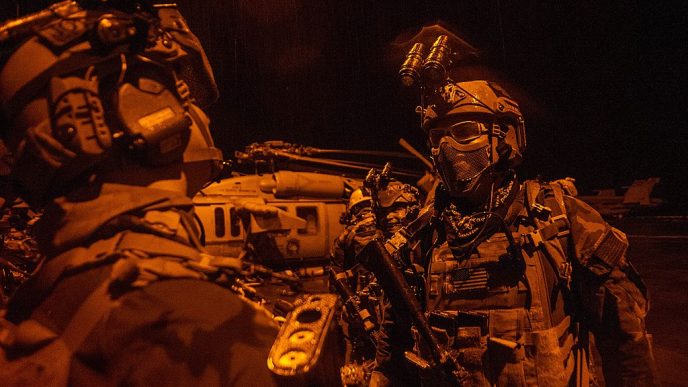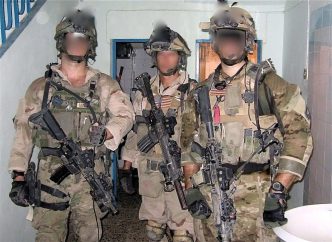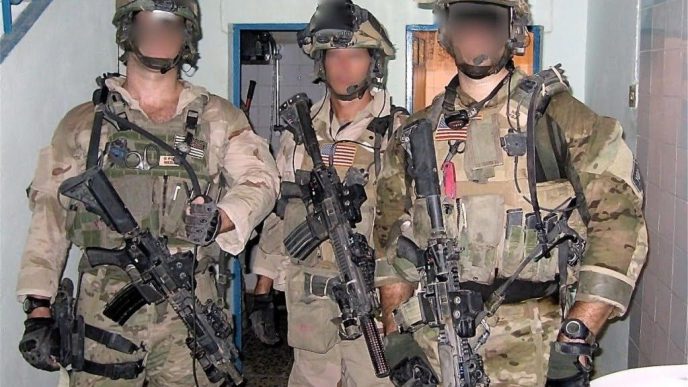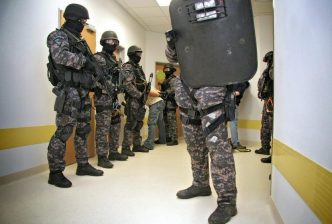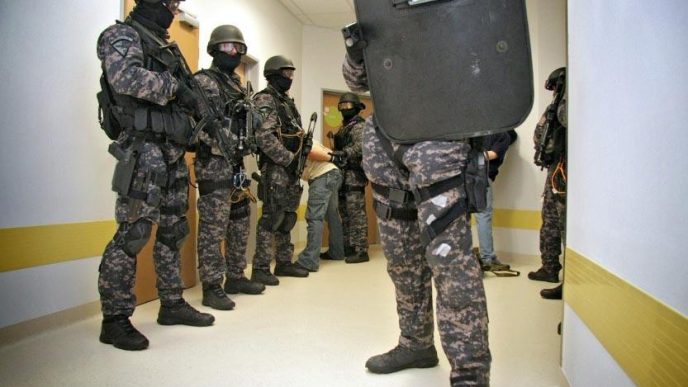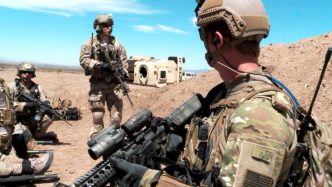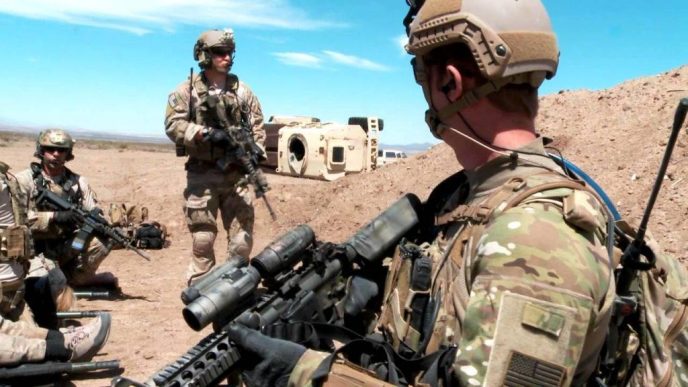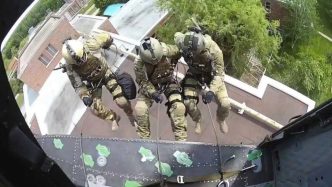
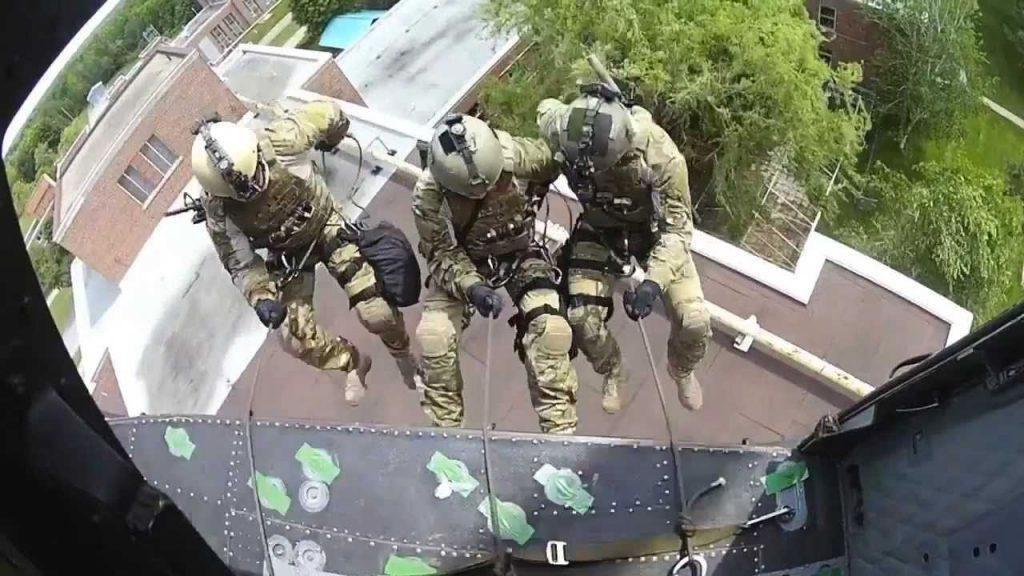
JTF2, or Joint Task Force 2, is a highly skilled and specialized unit of the Canadian military. As a Tier 1 unit, it is the primary force for counter-terrorism operations and provides armed support to other government agencies. With a reputation for excellence within the international community of special forces, JTF2 has proven its capabilities through successful participation in a variety of challenging and complex missions, ranging from Bosnia to Afghanistan, Iraq, and Libya. Often compared to elite units such as SEAL Team 6 and Delta Force, JTF2 is considered a premier counter-terrorism force among its peers.
Introduction
Joint Task Force 2 (JTF2) is a specialized unit of the Canadian military that serves as a key component of the country’s counter-terrorism efforts. It was formed in the 1990s as a successor to the Special Emergency Response Team of the Royal Canadian Mounted Police (RCMP), which had been responsible for addressing security concerns from 1986 to 1993. Today, JTF2 is part of the Canadian Special Operations Forces Command, alongside other units such as the 427 Special Operations Aviation Squadron and the Joint Nuclear, Biological, and Chemical Defence Company.
Throughout its history, JTF2 has established a reputation for excellence by working alongside renowned special forces units such as the SAS and Delta Force. The Unit has been recognized for its contributions with a US Presidential Unit Citation. American special forces commanders have praised it as a “go-to” option for direct action missions. Its headquarters is located at the Dwyer Hill Training Centre in Ottawa’s rural west end.
It’s important for them to be seen and be contributing to Canada’s overall defence because a lot of what they do is in the shadow.
Brig. Gen. Denis Thompson, commander of the Canadian Forces Special Operations Command, told reporters.
The name “Joint Task Force” refers to a military unit comprising members from multiple military branches. For example, the force responsible for military operations in Northern Canada is known as Joint Task Force (North).
JTF2 has between 300 and 600 personnel, with an average age of 37.
History
In 1992, the decision was made to disband the Royal Canadian Mounted Police’s Special Emergency Response Team (SERT) and establish a new military counter-terrorism group. This move was largely driven by the belief that the Canadian Forces could provide better-trained recruits for the program than civilian police forces and quell public concerns about police using primarily lethal means.
In early 1993, the first members of the newly formed Unit, Joint Task Force 2 (JTF2), began to join. These initial members were mainly drawn from the Canadian Airborne Regiment and Princess Patricia’s Canadian Light Infantry, and the Unit numbered around 100 members. They were given the SERT facility on Dwyer Hill Road, near Ottawa, as their training ground and base of operations. They were also provided a parked Greyhound bus and a DC-9 aircraft for ground training.
Their first planned action was to protect highways and water treatment plants around the Oka reserve while a regular police force targeted smuggling on the native reserve. However, the operation had to be canceled when details of the mission were revealed by two Quebec newspapers just days before it was to be executed, which triggered the Oka crisis.
Since then, JTF2 has been involved in many missions, primarily as part of international military campaigns (UN, NATO). Over the years, the Unit’s budget has continued to increase. Following the 9/11 attacks in 2001, the funding was allocated approximately $120 million over six years to expand the Unit’s capabilities and double its size to an estimated 600 personnel as part of the overall plan following the 9/11 attacks. The current budget for JTF2 is not publicly disclosed, but it is believed to have doubled since 2001.
Training and selection
Joint Task Force 2 (JTF2) is a special operations unit within the Canadian Armed Forces (CAF). The Unit is not open to civilians without prior military experience. Instead, it is only available to current CAF military personnel from all service branches. The JTF2 does not discriminate based on marital status or gender. However, it is not publicly known if there are any female members. Tattoos and other identifying marks are allowed, but individuals with criminal records must receive a pardon before being considered for the Unit.
There are three recognized pathways to becoming a member of the JTF2:
- Category A: Special Operations Assaulters (SOA) are directly employable in the tactical aspects of counter-terrorist/hostage rescue and other high-value tasks. This category is open to both genders of any military occupation (MOC) and any rank, from Private (OR-1) to Major (OF-3). Candidates must be volunteers and are selected based on their successful completion of a selection process and the special operations assaulter course (SOAC).
- Category B: Consists of personnel who are employable in combat support (CS) tasks during JTF2 operations. This category is divided into two groups:
- Mobility: This is a recently established group tasked with tactical mobility and other combat support tasks (e.g., fire support). Members receive skills training in JTF2, which includes the high-speed tactical operation of various vehicles and watercraft, as well as extensive training with crew-served and personal weapons. The role is open to both genders of any MOC and any rank from Private (OR-1) to Warrant Officer (OF-9). Candidates must be volunteers and are selected based on the successful completion of a selection process (established in 1999) and the successful completion of skills training.
- Specialists: Selected technical specialists who provide specialized skills directly related to their MOC. Candidates can be volunteers or those identified and recommended by their commanding officers and career managers. They are selected based on their superior trade skills, and a review of their career and personal profiles, as well as a personal interview, is conducted by JTF2. Category B (Specialists) are screened and selected as per Category C personnel.
- Category C: Consists of combat service support (CSS) personnel selected from regular force MOCs to fulfill JTF2 support requirements. Members are chosen from those who volunteer, as well as that personnel identified and recommended by commanding officers and career managers for service in JTF2. A review of career and personal profiles, and a personal interview, are conducted by JTF2.
Requirements
To become a Joint Task Force 2 (JTF2) member, a candidate must meet several requirements and pass through a rigorous selection and training process. The JTF2 program is open to all Canadian Armed Forces (CAF) officers and non-commissioned members, but only those with prior military experience are eligible to apply.
To qualify, candidates must have a minimum of two years of service in the Regular forces or three years in the Reserve forces. They must also obtain a security clearance, receive approval from their chain of command, and pass a pre-screening physical fitness test. Additionally, candidates must pass a medical examination and be parachute-trained or willing to undertake such training.
The selection process is designed to be challenging and rigorous, but those who complete it will gain valuable skills and experience that will stay with them for life. The JTF2 program includes several distinct training phases, including basic combat training, advanced individualized training, and airborne training. Candidates will learn the fundamentals of CAF special warfare through formal schooling and on-the-job training.
In addition to Phase 1 (Basic Combat) Training, candidates must also have completed Phase 2 (Advanced Individualised) Training and volunteer for airborne training (unless already qualified) to be eligible for JTF2 selection and training. All JTF2 candidates will undertake several distinct training phases (Table 1), in which candidates are taught the fundamentals of CAF special warfare through formal CAF schooling and on-the-job training.
| Serial | Sub-element/Course | Duration |
| 1 | Meet eligibility criteria | Variable |
| 2 | Pre-Selection Physical Fitness Test | Variable |
| 3 | JTF 2 Selection Process | 2 days |
| 4 | JTF 2 Assessment Centre | 7 days |
| 5 | Special Operations Assaulter Course (SOAC) | 7 months |
Pre-Screening Physical Fitness Test
The JTF2 selection process is a rigorous and highly selective journey designed to identify the best candidates for service in the Canadian Special Operations Forces. The process is open to all CAF officers and non-commissioned members who meet the general requirements, including a minimum of two years of military service for regular forces and three years for reserve forces.
To be eligible, candidates must also obtain a security clearance, gain approval from their chain of command, pass a Pre-Screening Physical Fitness Test, and pass an appropriate medical examination. Additionally, candidates must be parachute-trained or willing to undertake parachute training.
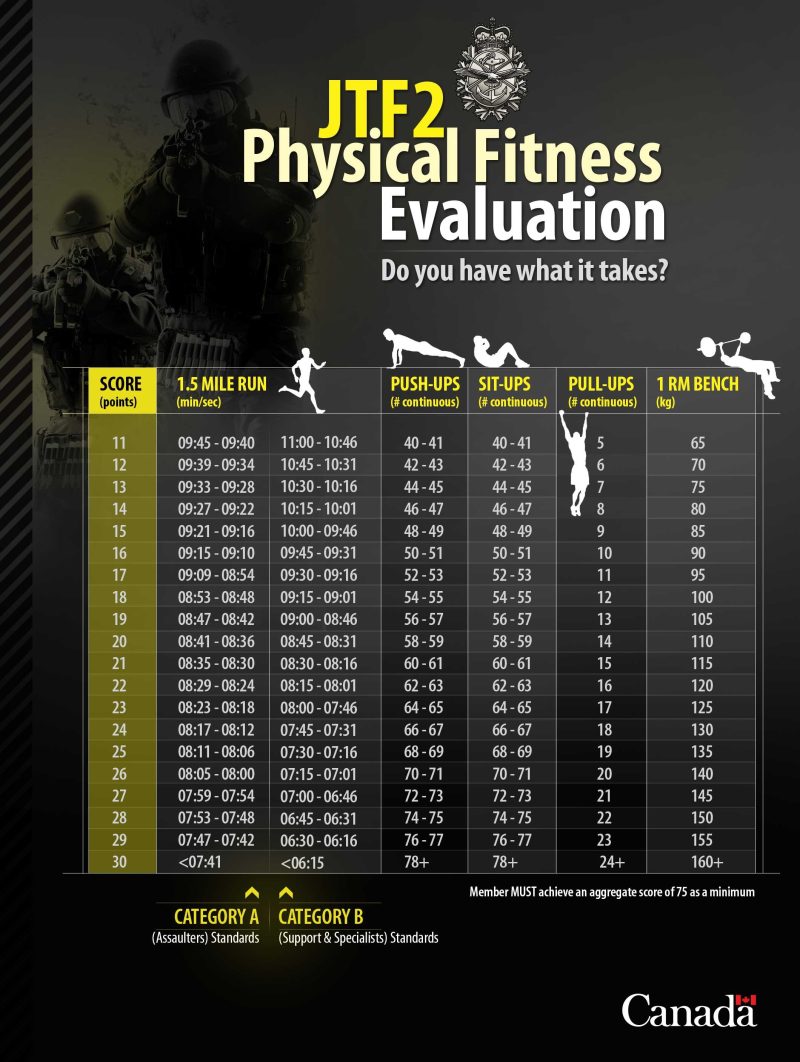
The selection process is divided into two phases. In Phase 1, candidates apply for service with a SO Unit and receive approval from their current Unit’s Commanding Officer. In Phase 2, candidates complete a series of tests, including a PFT, medical evaluation, aptitude testing, and a structured interview with a Personnel Selection Officer.
Candidates whose files meet the minimum threshold for service with that specific Unit are invited to attend the JTF2 Assessment Process at the Assessment Centre. The entire process is designed to identify candidates with the physical, mental and emotional resilience required to meet the demands of special operations service.
Special Operations Assaulter Course
The Special Operations Assaulter Course (SOAC) is a 7-month training program that a SOAC Warrant Officer oversees. During the course, candidates receive training in various areas such as land navigation, patrolling, weapons use, and insertion and extraction techniques. To prepare for trying to join JTF2, it is recommended to start working out and focus on being a team player and standing out positively. Additionally, it is essential to note that the selection process is highly competitive and rigorous, and it is crucial to be physically and mentally prepared for the challenges ahead.
Training
The Special Operations Support Orientation course is mandatory for all new non-Assaulter members of JTF 2. This course is designed to prepare support personnel for their duties within JTF 2 and ensure they are fully prepared for deployment. The course prepares members for their role within the organization and includes training in weapons handling, navigation, and insertion and extraction techniques.
Additionally, JTF 2 operators use the official military system for close-quarters combat (CQC) in their training. Still, there is also a growing movement within the Canadian Army to adopt the American SOCP system. This system is believed to be a combination of BJJ, Muay Thai, Krav Maga, wrestling and American boxing, knife and weapons fighting, weapons retention, disarming, and improvised use.
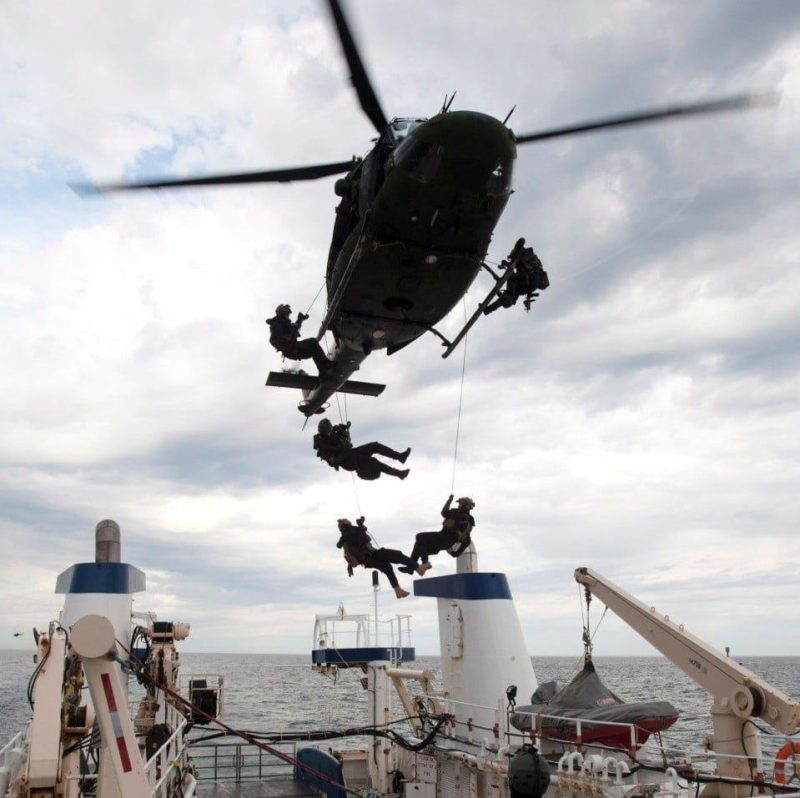
Organization and structure
The JTF2 is the Canadian Special Operations Forces Command (CANSOFCOM) special operations unit. It works alongside other units within CANSOFCOM, including the Canadian Joint Incident Response Unit (CJIRU), the Canadian Special Operations Regiment (CSOR), the 427 Special Operations Aviation Squadron (427 SOAS), and the Canadian Special Operations Training Centre (CSOTC).
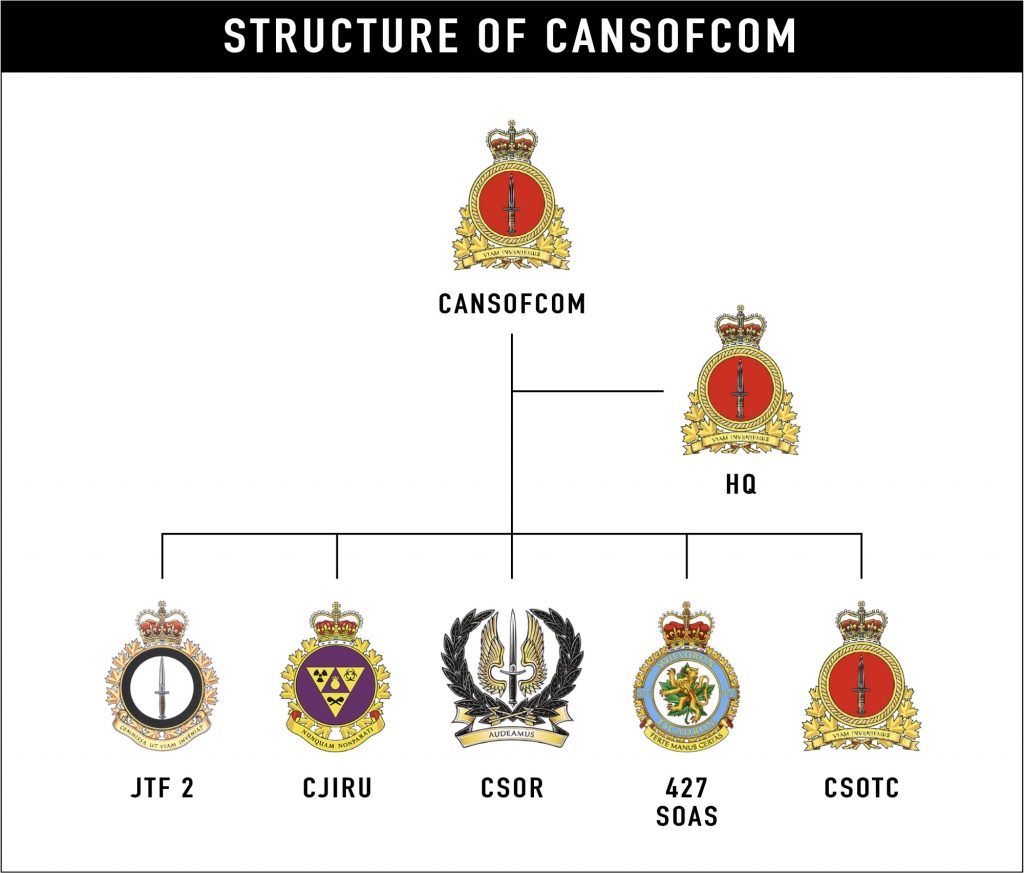
Missions and operations
Joint Task Force 2 (JTF2) is a specialized unit within the Canadian Special Operations Forces Command (CANSOFCOM) responsible for providing the Canadian government with force capable of handling situations that may affect national security. Its primary focus is counter-terrorism, but it can also be utilized in other military operations such as surveillance, security consulting, and close personal protection of VIPs. Due to their mission’s sensitive nature and small numbers, information about JTF2 is classified and not widely available to the public.
Operations
Its mission and operations are classified, and the Canadian government does not publicly comment on its activities. However, in recent years, JTF2 has begun to participate in training showcases to demonstrate its capabilities and to let the public know that it is an important part of Canada’s military power. Despite this, the identities of JTF2 members will remain hidden as they operate covertly.
It’s more demonstrative today because there’s more interest up there in just showing that we have the ability to reach out, anywhere, at any time.
Maj. Gen. David Fraser, a retired military commander
Zaire
In November 1996, the Canadian Army employed Joint Task Force 2 (JTF2) as a protection unit in Zaire. Its task was to assist Canadian General Maurice Maril in meeting Rwandan-backed rebel leader Laurent Kabila. However, during their journey, Congolese militias also attacked the JTF2 convoys. Additionally, in the same year, JTF2 was deployed to Haiti to advise and train the security forces of President René Préval. The training focused on how to raid weapons and repel revolutionary arms.
Haiti
n February 2004, the Canadian Army deployed Joint Task Force 2 (JTF2) to Haiti. The elite special operations unit took control of the airport from which US Marines took then-President Jean-Bertrand Aristide. The Unit’s task was also to protect the Canadian embassy during that crisis.
Vancouver Olympics
In 2010, Joint Task Force 2 (JTF2) soldiers were deployed to safeguard and support the Vancouver Winter Olympics. While some troops were on standby, others collaborated with the Royal Canadian Mounted Police. Despite the low threat level during the event, the Canadian government decided to augment the defense budget to ensure enhanced security. The overall budget allocated for the military during the 2010 Olympics was approximately $165 million (C$212).
JTF2 also ensured the safety of significant individuals in hostile areas. In May 2007, the JTF2 provided security to Stephen Harper, the Canadian Prime Minister.
Afghanistan
In the aftermath of the 9/11 attacks, in December 2001, the Canadian government dispatched around 40 JTF2 soldiers to Afghanistan as part of Task Force K-Bar. Notably, this marked the initial deployment of the Unit in a major combat situation outside of Canada. The K-Bar Task Force comprised around 3,000 Special Operations Officers from various international forces. The task force earned a commendation for heroism in 2004 from US President George W. Bush.
The Canadian government initially did not publicly announce JTF2’s involvement in Afghanistan. It was later revealed by photographs published by The Globe and Mail, which showed JTF2 members escorting and transferring detainees to the Americans. Between December 2001 and November 2002, JTF2 soldiers claimed to have captured 107 Taliban leaders and killed 115 Taliban or Al Qaeda, militants.
In March 2002, JTF2 participated in Operation Anaconda. The reconnaissance team performed direct action missions and close protection tasks during this operation. JTF2 worked with the New Zealand Special Air Service and the US Army Special Forces Operational Detachment-A. In July 2005, the Canadian government sent additional units to Afghanistan to fight against remaining Al Qaeda fighters. JTF2 was attached to a US special forces command at the Kandahar base. In 2004, JTF2 received a commendation for heroism from the then US President, George W. Bush, for their efforts in Afghanistan.
In August 2021, the Canadian Army deployed JTF2, alongside the CSOR, to Afghanistan to destroy sensitive documents and assist with evacuating staff in the Canadian embassy in Kabul following the Taliban takeover.
Iraq
In 2006, JTF2 collaborated with the US and the UK to rescue four Christian Peace Activists in Iraq. The Swords of Righteousness Brigade, a small terrorist group, had kidnapped them in Baghdad, two of whom were Canadian, one from the UK and one from the United States.
In response to the abduction, Task Force Knight, the UK special forces task force in Iraq, initiated Operation Lightwater. The British 22nd Special Air Service Regiment (SAS) was tasked with locating and recovering the four hostages, the US provided technical intelligence, and JTF2 assisted SAS during the operation. On March 23, 2006, SAS rescued three hostages, but the fourth was dead. Although the Canadian government did not comment on the mission, the British Foreign Office and the Pentagon acknowledged JTF2’s crucial role in the operation.
In 2014, JTF2 also took part in Operation Impact. The impact was a Canadian operation to train the Iraqi government’s military to fight the Islamic State in Iraq. The training focused primarily on enhancing the skill sets of the Iraqi armed forces, such as training on the use of heavy machine-gun fire and rocket-propelled grenades (RPGs) and providing expertise on battle planning. After receiving sniper training, Iraqi officials reported a “tenfold increase” in Iraqi sniper activity against IS.
Syria
On June 22, 2017, a member of the Joint Task Force 2 (JTF2) made history by taking down an Islamic State combatant from an unprecedented distance of 3,540 meters (2.2 miles). This feat, potentially the longest-range sniper shot ever publicly recorded, was accomplished by the JTF2 soldier and his spotter while stationed on the rooftop of a high-rise building. The shot took almost ten seconds to reach the target, using a McMillan TAC-50 .50 caliber rifle. This accomplishment surpassed the previous record set by British Corporal of Horse Craig Harrison, who had shot from 2,500 meters (1.5 miles) away in 2009. The achievement of the JTF2 soldier highlights the exceptional skill and precision of the Unit.
Equipment
JTF2 operators’ equipment consists of the following:
Rifles
- Colt Canada C7;
- Colt Canada C8;
- Colt Canada C8FSW.
6.2. Submachine Guns
- Heckler & Koch MP5A2;
- Heckler & Koch MP5A3;
- Heckler & Koch MP5SD.
Sniper Rifles
- Barrett M82;
- C14 Timberwolf;
- Heckler & Koch PSG1;
- M110 Semi-Automatic Sniper System (SASS);
- McMillan TAC-50.
Other Equipment
- FN Herstal P90 is a personal defense weapon.
- SIG Sauer P226 as a sidearm. The Canadian Army decided to pull from service the SIG Sauer P320 for some months due to an accidental discharge that caused an injury to a member of JTF2 in June 2021. The JTF2 is the only Unit in the Canadian military to have the SIG Sauer P320.
- Benelli M3 and Remington Model 870 as shotguns.
- FN Minimi C9A1 as a light machine gun and M2 Browning as a heavy machine gun.
- M203 grenade launcher and Heckler & Koch GMG as automatic grenade launchers.
- Saab Bofors Dynamics AT4 as an anti-tank weapon.
Conclusion
Joint Task Force 2 (JTF2) is a highly-skilled and elite special operations unit within the Canadian Armed Forces. The Unit’s activities and operations are primarily classified, but what is known is that they have a reputation for excellence in the field of counter-terrorism and counter-insurgency. They have played a key role in various high-profile missions, including providing security for the Winter Olympics in Vancouver, assisting in rescuing hostages in Iraq, and participating in operations against Al Qaeda, the Taliban, and ISIS.
JTF2’s training and equipment are among the best in the world and are known to excel in arctic warfare. They have captured or killed numerous high-value targets and have been praised by military leaders such as Navy Seal Captain Robert Harward, who led the Task Force K-Bar in Afghanistan and stated that JTF2 operators were his first choice for direct action missions.
In conclusion, JTF2 is a formidable and highly-respected special forces unit known for its exceptional training, advanced technology, and outstanding performance in the field. They are a crucial asset to the Canadian Armed Forces and have played a vital role in maintaining the safety and security of Canada and its allies.

